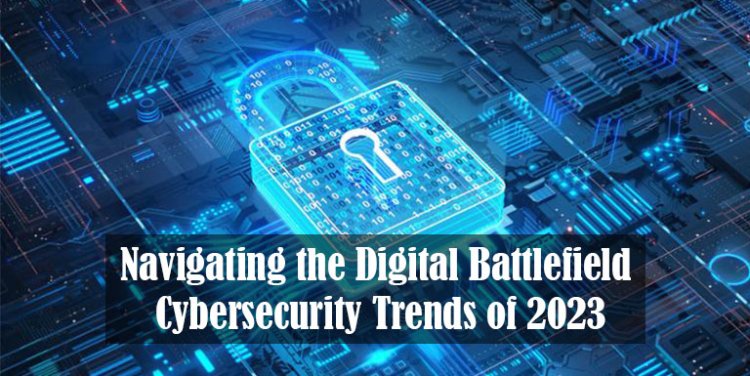Navigating the Digital Battlefield: Cybersecurity Trends of 2023

In an age dominated by technology and interconnected systems, the battle against cyber threats is more critical than ever. As businesses, governments, and individuals continue to rely on digital tools, cyber attackers are stepping up their game. In this blog, we will delve into the latest cybersecurity trends and challenges of 2023 and explore the strategies to stay ahead in this digital battlefield.
Trend 1: Rise of Ransomware as a Service (RaaS)
Ransomware, where attackers encrypt your data and demand a ransom for its release, has evolved. Ransomware as a Service (RaaS) is on the rise, making it easier for even non-technical criminals to launch cyberattacks. This trend increases the need for businesses to bolster their security measures and have robust backup and recovery plans in place.
Trend 2: AI-Powered Attacks
Artificial intelligence and machine learning are no longer just tools for cybersecurity; they are being used by attackers to automate and enhance their attacks. AI can identify vulnerabilities, craft spear-phishing emails, and even autonomously target systems. To counter this trend, organizations must invest in AI-based security solutions.
Trend 3: Supply Chain Attacks
Attackers are increasingly targeting the supply chains of organizations, seeking to compromise software and hardware before they even reach their intended users. These attacks can have far-reaching consequences. Ensuring the security of your supply chain is becoming a top priority.
Trend 4: Zero Trust Architecture
The traditional security model of "trust but verify" is being replaced by the "zero trust" model, which assumes that threats are both external and internal. Implementing zero trust architecture involves strict identity verification, least privilege access, and continuous monitoring of all network activity.
Trend 5: Increased Focus on IoT Security
As the Internet of Things (IoT) expands, it creates more entry points for cyber attackers. Devices like smart thermostats and cameras can be vulnerable to hacking. To combat this, IoT manufacturers and users must prioritize security features and practices.
Trend 6: Regulatory Compliance
Global regulatory authorities are placing increasing pressure on organizations to improve data protection and privacy practices. Compliance with regulations like GDPR, CCPA, and others is becoming non-negotiable. Fines for data breaches and non-compliance are hefty.
Trend 7: Cybersecurity Skills Shortage
The demand for cybersecurity professionals continues to outstrip the supply. This skills gap is a significant challenge for organizations, making it vital to invest in training and development for existing staff and encourage more individuals to pursue careers in cybersecurity.
Trend 8: Enhanced Security Awareness and Training
Human error remains a leading cause of security breaches. Investing in employee cybersecurity training is paramount. Raising awareness about phishing, social engineering, and security best practices can significantly reduce the risk of successful cyberattacks.
Trend 9: Advanced Identity and Access Management (IAM)
With the increasing need for remote work and the use of cloud services, advanced IAM solutions are vital. Multi-factor authentication, biometrics, and strong password policies are crucial components of IAM.
Trend 10: Quantum Computing Threats
While quantum computers hold great potential for solving complex problems, they also pose a risk to current encryption methods. Organizations should stay informed about quantum computing developments and begin planning for post-quantum cryptography.
Cybersecurity is an ever-evolving battlefield, and staying ahead of the threats is an ongoing challenge. To protect your organization and personal data, it's crucial to stay informed about the latest trends and invest in cybersecurity measures that adapt to the changing threat landscape. In 2023 and beyond, the focus on proactive security, advanced technologies, and robust training will be essential to safeguard against cyber threats.
What's Your Reaction?















